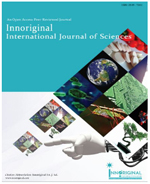EVALUATION AND COMPARISON OF CHALKBOARD TEACHING, POWER POINT TEACHING AND COMBINATION OF CHALKBOARD-POWER POINT TEACHING IN PHARMACOLOGY SUBJECT FOR SECOND YEAR MBBS STUDENTS IN MEDICAL COLLEGE
Abstract
Context: Various teaching methodologies are routinely utilized in medical education on daily basis. In the view of new teaching aids in medical education, it is necessary to evaluate and compare the conventional method with these newer ones for necessary corrections and practical implementation.  Objectives :The study was aimed to explore knowledge and perception of different techniques of pharmacology teaching in students of second MBBS. Methods: This was an interventional cross-over study was conducted in the department of pharmacology in second MBBS students. Predesigned and prevalidated questionnaire was initially used as pre-test and students were exposed to different teaching techniques and then same was used as post-test. After this, questionnaire for perception were filled by students containing various questions.Results: The analysis was performed using Statistical Package for Social Sciences (SPSS) version 10.0 programmes for Windows. One-way analysis of variance (ANOVA) and post-hoc test for multiple comparisons was applied.On statistical comparison of pre and post test square it was evident that students performance was best in chalkboard and power point combination group when compared chalkboard and power point technique group in terms of scores. Analysis of perception question also revelled same results in favour of combination technique.Conclusions: In medical college for undergraduate students, instead of individual chalkboard or power point technique, the combination of these two techniques is more suitable tool of teaching and learning.References
Kosslyn SM, Kievit RA, Russell AG, Shephard JM. PowerPoint® Presentation Flaws and Failures: A Psychological Analysis. Frontiers in Psychology. 2012;3:230.
Fotheringham MJ, Owies D, Leslie E, Owen N. Interactive health communication in preventive medicine: internet-based strategies in teaching and research. Am J Prev Med 2000;19:113-20.
Moreno R, Mayer R E. A Coherence Effect in Multimedia Learning: The Case for Minimizing Irrelevant Sounds in the Design of Multimedia Instructional Messages. Journal of Educational Psychology 2000; 92(1), 117-25.
Schraw, G. Promoting general metacognitive awareness. Instr Sci 1998; 26(1–2):113–25.
Mayer RE. The Promise of Multimedia Learning. In: Multimedia Learning. Cambridge: Cambridge University Press; 2001. page 1–20. [Last Cited on 3th April 2018.]
Ormrod JE, editor. Human learning. 3rd ed. Sydney: Prentice Hall; 1999.
Chadwick SM, Bearn DR. Teaching and learning: an update for the orthodontist. J Orthodont 2002; 29:162-7.
Mayer RE, Moreno R. A split-attention effect in multimedia learning: Evidence for dual processing systems in working memory. Journal of Educational Psychology 1998;90:312-20.
Meo SA. Power of the PowerPoint and role of chalkboard. Med Teach 2008;30:640-1.
Collins J. Education techniques for lifelong learning: making a PowerPoint presentation. Radiographics 2004; 24:1177-83.
Meo SA, Shahabuddin S, Al Masri AA, Ahmed SM, Aqil M, Anwer MA. et al. Comparison of the Impact of PowerPoint and Chalkboard in Undergraduate Medical Teaching: An Evidence Based Study. J Coll Physicians Surg Pak. 2013;23(1):47-50.
Mayer RE, Anderson RB. The instructive animation: Helping students build connections between words and pictures in multimedia learning. J Educ Psych. 1992;84:444-52.
Hunt N. Enhancing lectures the modern way. The New Academic. 1998:39.
Seth V, Upadhyaya P, Ahmad M, Kumar V. Impact of various lecture delivery methods in pharmacology. EXCLI Journal. 2010;9:96-101.
Rossen S, McGraw D, Graham E, Lee D. Enhancing your lecture with presentation software-Setting instructional goals 1997 Last updated September 1997 by David McGraw for Faculty New Media Center (FNMC) at UCLA Office of Instructional Development Available from: http://www.oid.ucla.edu [Last accessed on 3rd May 2018]
deSaSB, Keny MS. PowerPoint versus Chalkboard Based Lectures in Pharmacology: Evaluation of Their Impact on Medical Student’s Knowledge and Their Preferences. Int J Adv Health Sci 2014; 1(5): 10-14.
Ricer RE, Filak AT, Short J. Does a high tech (computerized, animated, PowerPoint) presentation increase retention of material compared to a low tech (black on clear overheads) presentation? Teach Learn Med. 2005;17(2):107-11
Baxi SN, Shah C J, Parmar RD, Parmar D, Tripathi CB. Student’s perception of different teaching aids in a medical college. Afr J Health Prof Educ. 2009;1(1):15-6.
Kumar A, Singh R, Mohan L, K K Mani. Student’s views on audio visual aids used during didactic lectures in a medical college. Asian J Med Sci. 2013;4(2):36-40.
Mohan L, Sankar P R, Kamath A, Manish M S, Eesha B R. Students' attitudes towards the use of audio-visual aids during didactic lecture in pharmacology. J Clin Diagn Res. 2010; 4(6):3363-8.


